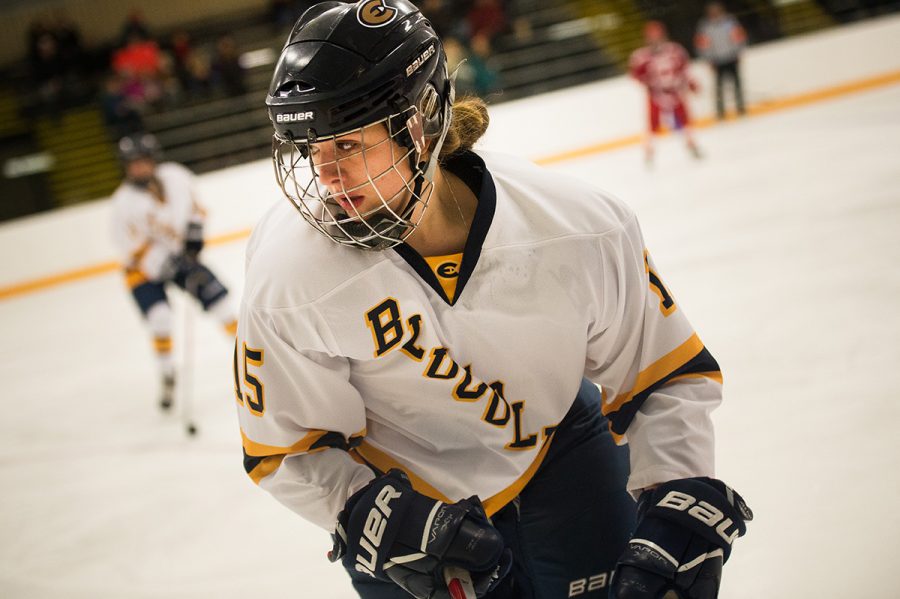Female athletes are on the rise
How Title IX gives women more opportunity to thrive in sports
More stories from Erica Jones
Photo by Kelsey Smith
Currently, the Blugold Women’s Hockey Team has 27 players, including Sadie Defatte, shown here.
In the past, women’s sports were pigeonholed to cheerleading and square dancing. With the establishment of Title IX, women now have the opportunity to do those activities and so much more in the world of athletics.
Title IX has three parts as it applies to athletic programs
— Effective accommodation of student interests and abilities (participation)
— Athletic financial assistance (scholarships)
— Other program components (i.e. access to tutoring, coaching, competitive facilities, etc.)
Essentially, it calls for equality between men’s and women’s sports programs in any school that funds sports teams. This includes colleges, high schools, and even some elementary schools.
Since Title IX was established in 1972, there has been a major increase in the number of girls and women who participate in sports.
According to The She Network, before Title IX, one in 27 girls played sports. Today that number is two in five.
The Women’s Sports Foundation states, “The dramatic increase in girls’ and women’s participation in sport since Title IX was passed in 1972 (by 560% at the college level and 990% in high schools) demonstrates that it was lack of opportunity – not lack of interest – that kept females out of high school and college athletics for so many years.”
Blugold women’s hockey head coach, Erik Strand, made the move from coaching men’s to women’s hockey last year. In his second season coaching the women’s team, he said he notices physical differences in female players such as lower strength and speed, but he attributes these to the focus men’s teams typically have on conditioning work. Strand also noted the women’s team listens to directions in a more literal sense and is more open in their communication.
Coach Strand says he sees not the discrimination directed toward women’s teams; instead, he focuses on the positive.
“What I see is the opportunity,” Strand said, “I think there’s too much focus on what one group is getting versus the other. If I’m not getting something, it’s about what I can do to earn it. You have to think about what you’re lacking and how you can get it.”
Strand says he cares about the team’s success, and he said he doesn’t see a reason to coach differently depending on who he is coaching.
“I’ve been asked how I’m going to change – how I’m going to be different – moving from coaching men to coaching women, but the answer is, I’m not,” he said. “I expect the same of my male and female athletes. At the end of the day, I’m not coaching women. I’m coaching hockey.”
Strand says he has seen an increase in recruitment numbers for the women’s hockey team, but he continues to look for athletes who are dedicated and passionate about the sport within the larger turnout.
Macie McKinley is a freshman who is studying Kinesiology as a pre-professional track to physical therapy. She is currently a track and field athlete, but has participated in several sports since middle school, including cross country and volleyball.
McKinley says as a woman, she perceives herself as strong. She pushes herself to be the best she can possibly be because she truly has a love for her sport. She says an important part of being a woman in athletics is being a role model.
“I think having more girls in sports is a good thing because it shows younger girls that they can go on and play when they’re older and be successful,” McKinley said.
Although McKinley said she worries about increased competition as far as tryouts for the track team are concerned, she also said there is good reason the number of females in sports is on the rise.
“We deserve the same rights as guys do and we deserve to play just as much as they are able to,” McKinley said. “We came to play.”

